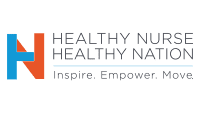A powerful tool for nurse well-being
Editor’s note: This is an early release of a web exclusive article for the May 2021 issue of American Nurse Journal.
• Highly empathic people have a neurologically unique response to music.
• Music listening has meaningful and broad impacts on complex cognitive, affective, and sensorimotor processes.
• Music is a universal language that connects us and our stories to others.
Every life has a soundtrack. What’s yours? Think back to the different phases of your life, and you can probably connect much of it—especially births, graduations, weddings, and funerals—to music. A song may transport you back to your favorite movie or a touching moment. Music seems to tap into something deep inside of us and exists in every culture. People use music to find solace, to celebrate, to facilitate emotional expression, and even to provide motivation during exercise. People at every age respond to music—babies are soothed by it, young adults dance to it for hours, and older adults can be mentally transported back to their youth by the memories it evokes. Why is music such an important part of our lives, and, how does it help us cope with stress?
In healthcare, nurses experience physical and emotional stress, but they report that they’re not taught how to care for their emotional well-being. According to Dyrbye and colleagues, more than half of all U.S. physicians and nurses report that they experience symptoms of burnout. Davidson and colleagues found that the rates of depression and suicide risk in nurses and physicians are higher than in the general population. Many causes of burnout and compassion fatigue are related to system problems requiring large-scale changes in healthcare delivery, but nurses and employers can implement other strategies—including listening to and creating music—to mitigate stress.
Music and emotions
We use music to connect emotionally to our stories and the stories of others, which decreases loneliness and provides us with a sense of common humanity. Research by Wallmark and colleagues shows that highly empathic people have a neurologically unique response to music. For example, people with higher empathy, when compared to individuals with low empathy, process familiar music using more of their brain’s social circuitry. This means that music can act like a proxy for human interaction, stimulating regions of the brain responsible for reward, social awareness, and social emotion regulation.
Nurses, who are known for their empathetic care, and healthcare teams can use music to improve individual and team well-being. Wallmark and colleagues also found that musical interaction (listening and creating) can promote empathy. In their research, healthcare providers described their personal experiences of playing and listening to music to cope with work-related stress and grief as profoundly healing. Research by Bittman and colleagues (2003) indicates that both listening to and making music are a cost-effective strategy for reducing stress and burnout; listening alone has been shown to significantly improve mood and work performance. In addition, they found that recreational music-making is more effective than quiet reading for relaxation and stress relief.
Why does music resonate so deeply?
Our emotional response when listening to and creating music relies on many elements, including the uniqueness of sound, instrument, harmony, creative process, expression, and the social dynamic between the creator, co-creator, and potential audience. In addition, our response to music depends on personal preference. For this reason, music frequently is used as a “self-prescription” to enhance or shift our mood, initiate relaxation, and facilitate transcendence of the activities and challenges of daily life.
Krumhansl found that music listening and making is processed throughout the spinal, subcortical, and cortical regions of the central nervous system, providing a meaningful and broad impact on complex cognitive, affective, and sensorimotor processes. Chanda and Levitin explain that listening to pleasant music has a neurochemical impact on reward and pleasure, stress and arousal, immunity, and social affiliation. This may explain why listening to music is one of the most common forms of relaxation.
Music applications
Depending on your preference, you can use music passively (listening) or actively (playing) to reduce stress.
Listening to music
The most accessible way to experience music’s healing effects is simply to listen to it intentionally. According to Bradt and colleagues, benefits have been seen after listening for only short periods. Musical selections can support a person’s specific needs in the moment, including focused attention, increased energy, deeper relaxation, sleep support, and spiritual connection. Other steps that enhance relaxation while listening to music include finding a comfortable position, establishing uninterrupted space and time, dimming the lights, and bringing your full attention to the music listening experience.
Playing music
Nurses can engage in active music making even if they don’t have any prior musical experience. For example, Bittman and colleagues studied a recreational music-making program for healthcare professionals that included group drumming (which doesn’t require music theory knowledge or technical skills) in the workplace. The researchers emphasize that creative expression and social connection is the primary focus and the instrument becomes secondary.
Recently, more hospitals have been creating choirs for healthcare professionals to help reduce stress and burnout and increase connection. Music is a socially acceptable form of expression within communities and has an important role in creating and reinforcing social bonds. In a study by Batt-Rawden and Anderson, singers in community choirs reported that participation brings joy and facilitates belonging, social inclusion, and self-esteem. Some participants described the choirs as vital to survival. Few studies have looked at the outcomes of participation in hospital choirs, but anecdotal reports include reduced stress, joy in using another part of the brain, and disconnecting from workplace concerns. (See: Tell your story with music.)
Tell your story with music
In my (Carolyn S. Phillips, PhD, RN, AOCNP) research, I studied the feasibility and impact of oncology nurses sharing their caregiving stories through song to help them process the grief and suffering they observe in their work. In the intervention, Storytelling Through Music, oncology nurses met once a week for 6 weeks for guided writing prompts to create their caregiving story. Many nurses wrote about patients they had cared for over a number of years. When those patients died, the nurses had no way of processing the loss. Other nurses wrote stories of family members who had cancer and how those experiences led to their careers in oncology nursing.
The participants reported that telling their stories provided affirmation and acknowledgement of their caregiving efforts and that music deepened their emotional expression. During the songwriting process, the nurses gained additional insights that revealed true emotions linked to their work stress. Compared to the control group, participants in the intervention reported significantly less loneliness, insomnia, and self-judgment. They also reported more self-compassion, mindfulness, and self-reflection after the intervention.
To learn more about opportunities to tell your story through music and hear examples of stories and songs created by nurses, visit www.song-soul.org.
Click on the links below to hear music created by nurses.
“Heart Rubbed Raw”
“Song for My Soul”
Opportunities exist outside of the workplace to use music for stress relief. Many communities have choirs, adult rock bands for novices, and music lessons for adults. Instruments, such as the ukulele, which are lightweight and affordable, are easy to play. If in-person lessons aren’t readily available, online resources provide music instruction. Free and low-cost apps, such as GarageBand and TikTok, allow users to create music or music-inspired media with minimal effort and no prior experience.
The power of music
New and emerging science focuses on the neurocognitive effects of music for improving well-being. Nurses are confronted with significant stress in the workplace, and music has broad implications for helping professionals cope. Music has the power to break down barriers, build social connections, and promote teamwork.
Carolyn S. Phillips is a post-doctoral research fellow at Dana-Farber Cancer Institute and Harvard Medical School in Boston, Massachusetts. Heather L. Woods is the program manager for expressive therapies at Dana-Farber Cancer Institute.
References
Batt-Rawden K, Andersen S. ‘Singing has empowered, enchanted and enthralled me’—Choirs for wellbeing? Health Promot Int. 2020;35(1):140-50. doi:10.1093/heapro/day122
Bittman B, Berk L, Shannon M, et al. Recreational music-making modulates the human stress response: A preliminary individualized gene expression strategy. Med Sci Monit. 2005;11(2):BR31-40.
Bittman B, Bruhn KT, Stevens C, Westengard J, Umbach PO. Recreational music-making: A cost-effective group interdisciplinary strategy for reducing burnout and improving mood states in long-term care workers. Adv Mind Body Med. 2003;19(3-4):4-15.=
Bradt J, Dileo C, Potvin N. Music for stress and anxiety reduction in coronary heart disease patients. Cochrane Database Syst Rev. 2013;12:CD006577. doi: 10.1002/14651858.CD006577.pub3.
Chanda ML, Levitin DJ. The neurochemistry of music. Trends Cogn Sci. 2013;17(4):179-93. doi:10.1016/j.tics.2013.02.007
Davidson JE, Proudfoot J, Lee K, Zisook S. Nurse suicide in the United States: Analysis of the Centers for Disease Control 2014 National Violent Death Reporting System dataset. Arch Psychiatr Nurs. 2019;33(5):16-21. doi:10.1016/j.apnu.2019.04.006
Dyrbye LN, Shanafelt TD, Sinsky CA, et al. Burnout among health care professionals: A call to explore and address this underrecognized threat to safe, high-quality care. NAM Perspectives. July 7, 2017. nam.edu/burnout-among-health-care-professionals-a-call-to-explore-and-address-this-underrecognized-threat-to-safe-high-quality-care
Krumhansl CL. Music: A link between cognition and emotion. Curr Dir Psychol Sci. 2002;11(2):45-50. doi:10.1111/1467-8721.00165
Phillips CS, Volker DL, Davidson KL, Becker H. Storytelling through music: A multidimensional expressive arts intervention to improve emotional well-being of oncology nurses. JCO Oncol Pract. 2020;15(4):e405-14. doi:10.1200/JOP.19.00748
Wallmark Z, Deblieck C, Iacoboni M. Neurophysiological effects of trait empathy in music listening. Front Behav Neurosci. 2018;12:66. doi:10.3389/fnbeh.2018.00066


















